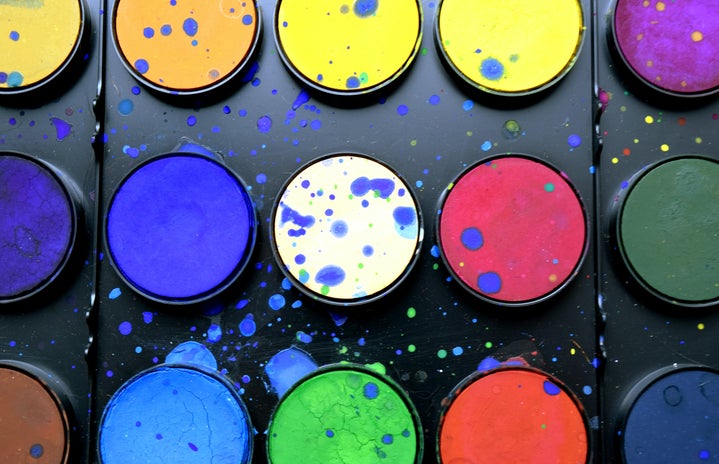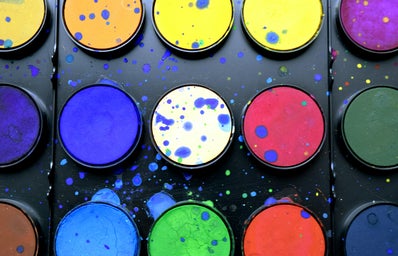Avid bookstore-goers will have noticed a bursting forth of a different kind of self-help book adorning the shelves: the coloring book.
Filled cover-to-cover with beautifully intricate designs—from mandalas to decked-out elephants—like these ones from Indigo, coloring books are taking the self-help world by storm.
Johanna Basford’s Secret Garden: An Inky Treasure Hunt and coloring book has sold more than 2 million copies worldwide since its release in 2013.
Indigo claims that these are a “beautiful and fun way to help relieve stress, inspire creativity, and express yourself.” Taking a closer look into these claims could help you to decide whether to spend your precious college-allowance on one of them and a full set of coloring pencils, or to err on the side of caution and just pull another stay-in, take-out Netflix binge (which might serve the same purposes).
You may have heard coloring-in activities being referred to as ‘art therapy.’
According to MedicalDaily.com, art therapy helps self-expression, and is often “used to help people express themselves when what they’re feeling is too difficult to put into words.”
The scientific community also toots the art therapy horn. In a study conducted in 2006 by Monti et al., mindfulness-based art therapy (MBAT) for women battling cancer significantly decreased symptoms of physical and emotional distress during treatment.”
Defining ‘Therapy’
The Merriam-Webster dictionary defines therapy as being (rather circularly, in my opinion) the therapeutic treatment especially of bodily, mental, or behavioral disorder.
So, with this definition in mind, is coloring intricate designs for hours on end considered therapy? Drena Fagen, an art therapist from NYU’s Steinhardt School doesn’t think so.
“I consider [them] therapeutic, which is not the same thing.”
This is the Merriam-Webster definition for ‘therapeutic’: “producing good effects on your body or mind.”
While you may have noticed that a giant host of things suddenly qualify as being therapeutic under this definition, (including chicken McNuggets and sweatpants) I am happy to report that coloring-in falls under the definition too. According to neuropsychologist Dr. Stan Rodski, “The most amazing things occur— we start seeing changes in heart rate, changes in brainwaves.” These are physical changes that, although they may not treat disorders of any kind, are in and of itself, beneficial to our well-being.
The “Art Therapy Colouring Book” by the Merrits are just one of many that claim coloring books serve as a form of art therapy. However, these have been slammed by the real art therapists and health professionals all over the world. See why they don’t see coloring as art therapy here.
Coloring & chromotherapy
Another possible benefit of coloring-in lies in the colors themselves. Even if it isn’t art therapy, per se, colors do have psychological effects on mood. This handy color-wheel is labeled with the emotions that each color is associated with inducing.
There’s a name to this thing too: its called chromotherapy, and some studies suggest that it could be helpful in relieving symptoms of seasonal affective disorder, or SAD, through the properties of the energy waves that are consituent of colors. According to F. Birren, Yazeemi, and Raza, “Colors have a profound effect on us at all levels—physical, mental and emotional. If our energy levels are blocked or depleted, then our body cannot function properly, and this in turn can lead to a variety of problems at different levels.”
Thankfully for us, it seems McGill has already hopped on the coloring-train. PopArtMcGill—a newly started initiative focused on improving student mental health on campus—is fully dedicated to coloring in mandalas as a form of stress-relief.
We definitely encourage you to get involved and participate in their events for some first-hand experience. Learn more about their scheduled sessions here!
The verdict
Even if coloring-books aren’t curing any disorders any time soon, activities that reduce anxiety is a deep breath of fresh air in our fast-paced, high-strung lifestyles. This is one form of self-help that encourages mindlessness instead of mindfulness, and we at Her Campus McGill welcome it with open books and color-pencils in hand.
Bibliography
Dovey, D. (2015, October 8). The Therapeutic Science of Adult Coloring Books.
Birren F. Light, Colour and Environment. PA, USA: Schiffer Pub Ltd; 1988
Images sources
– conversioner.com
– https://www.facebook.com/PopArtMcGill/photos_stream
– http://www.newyorker.com/business/currency/why-adults-are-buying-colorin…

